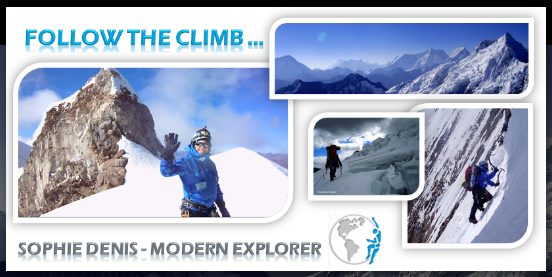Dans la nuit du 30 juin au 1er juillet 2012
OFFRONS UNE SECONDE À LA TERRE
Mis à jour le 26 juin 2012
Dans la nuit du 30 juin au 1er juillet 2012, juste avant 0h 00min 00s UTC, une seconde supplémentaire vient s’ajouter au temps légal de tous les pays du monde. En France, avec l’heure d’été, cette seconde intercalaire interviendra le 1er juillet au matin : les horloges afficheront 1h 59min 59s, puis 1h 59min 60s et enfin 2h 00min 00s. La dernière minute aura alors duré 61s. L’ajout de cette seconde, corrélé aux variations de la rotation de notre planète, est décidé au niveau mondial à l’Observatoire de Paris au sein de son laboratoire Systèmes de Référence Temps-Espace - SYRTE.
Salle de contrôle du temps légal français,
à l’Observatoire de Paris (Observatoire de Paris / SYRTE)
Responsable du temps légal Français, celui-ci est aussi chargé d’introduire cette seconde intercalaire dans notre pays. La rotation de la Terre, à l’origine de l’alternance entre le jour et la nuit, est irrégulière et ralentit lentement au cours du temps. Les marées provoquées par la Lune et le Soleil dissipent son énergie de rotation sur le long terme. À plus courte échéance, des variations aléatoires apparaissent au gré des mouvements atmosphériques, des variations saisonnières des calottes glacières, des mouvements du cœur interne, voire des séismes. Cette rotation par rapport à un référentiel fixe défini par des quasars, moyennant quelques corrections, définit le Temps Universel UT1, prolongation moderne du temps moyen de Greenwich GMT, désormais obsolète.
Depuis 1967, la seconde n’est plus calculée à partir du mouvement des astres mais en utilisant les propriétés de la matière, à savoir la tendance qu’ont les atomes à émettre un rayonnement avec une fréquence toujours identique lorsqu’ils changent de niveau d’énergie. C’est ainsi que l’on a défini la seconde du système international.
C’est une composante du Service international de la rotation terrestre et des systèmes de référence - IERS, implantée à l’Observatoire de Paris au sein du SYRTE, qui mesure les variations de l’orientation de la Terre et qui est donc responsable de la prédiction et de l’annonce de ces secondes intercalaires.
Cette décision est ensuite mise en œuvre par les autorités internationales et nationales responsables de la diffusion du temps. Pour la France, c’est le LNE-SYRTE qui est chargé de cette mission. Cette autre composante du SYRTE fabrique le Temps Universel Coordonné de l’Observatoire de Paris - UTC(OP). Cette référence de grande précision est utilisée par l’horloge parlante de l’opérateur Orange, hébergée à l’Observatoire de Paris, pour diffuser le temps légal français ; on peut l’écouter en composant le 36 99. Le temps légal basé sur UTC(OP) est également diffusé de manière transparente par encodage sur l’onde porteuse de France Inter, afin qu’il puisse être utilisé à tout moment par des laboratoires, des industriels, des collectivités…, partout en France métropolitaine.
Dernière génération d’horloge optique au strontium mise au point au SYRTE.
(Observatoire de Paris / SYRTE)
La recherche d’une précision toujours plus grande est motivée par des applications très concrètes comme le GPS, et d’autres plus théoriques en physique fondamentale et en astronomie. Les dernières générations d’horloges, développées au SYRTE, utilisent des atomes de strontium refroidis par laser et permettront d’atteindre prochainement une précision de 10-17sur la fréquence de l’horloge, soit une erreur d’une seconde au bout de 3 milliards d’années !
Le maintien de la seconde intercalaire est aujourd’hui discuté. Son implémentation dans les systèmes informatiques n’a pas encore été totalement résolue et standardisée, du fait de son imprévisibilité et sa rareté (après 2005 et 2008, ce sera la 3e seconde ajoutée depuis 1999). Depuis 1972, 24 secondes intercalaires ont été introduites et aucun incident sérieux n’a cependant été constaté.
En plus d’un écart d’une heure au bout de 500 ans, la plus spectaculaire conséquence de sa suppression serait, pour la première fois dans l’histoire de l’humanité, de découpler totalement l’heure des mouvements célestes.
Son sort sera décidé lors de la prochaine conférence mondiale des radiocommunications organisée par l’UIT - Union Internationale des Télécommunications. Rendez vous en 2015, à plus ou moins quelques secondes.
Observatoire de Paris - Espace Grand Public
Amitié et Solidarité
11, rue Ambroise Croizat 78280 Guyancourt
01 3 44 20 33 - Solidarite78280@aol.com
11, rue Ambroise Croizat 78280 Guyancourt
01 3 44 20 33 - Solidarite78280@aol.com
























